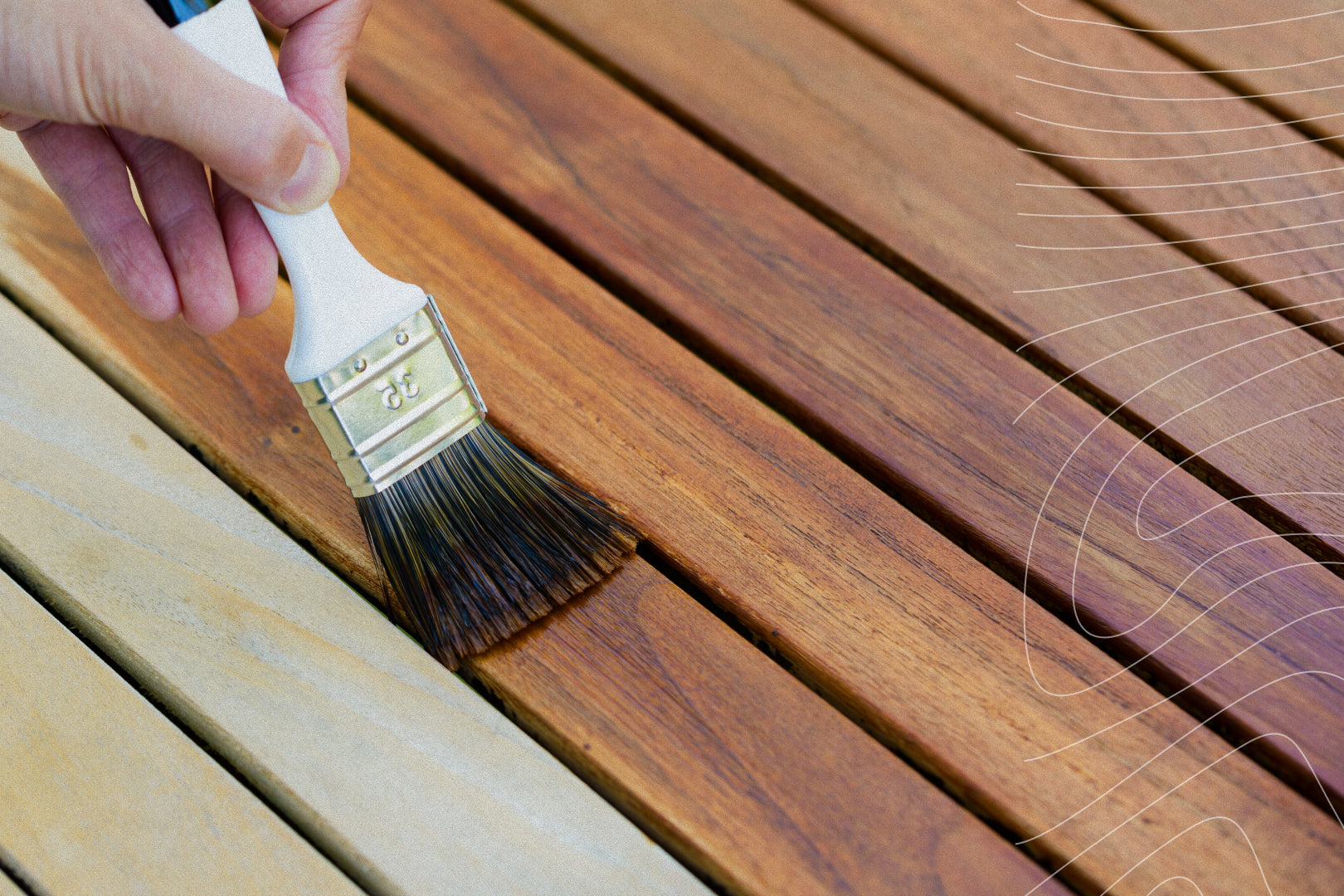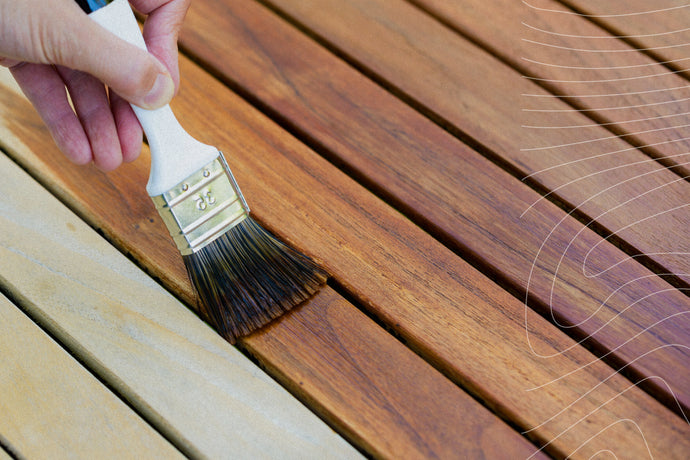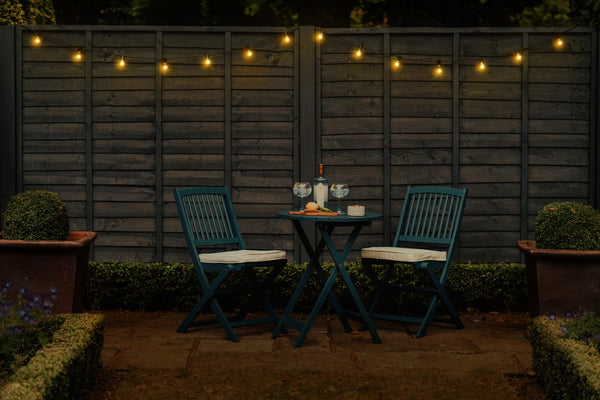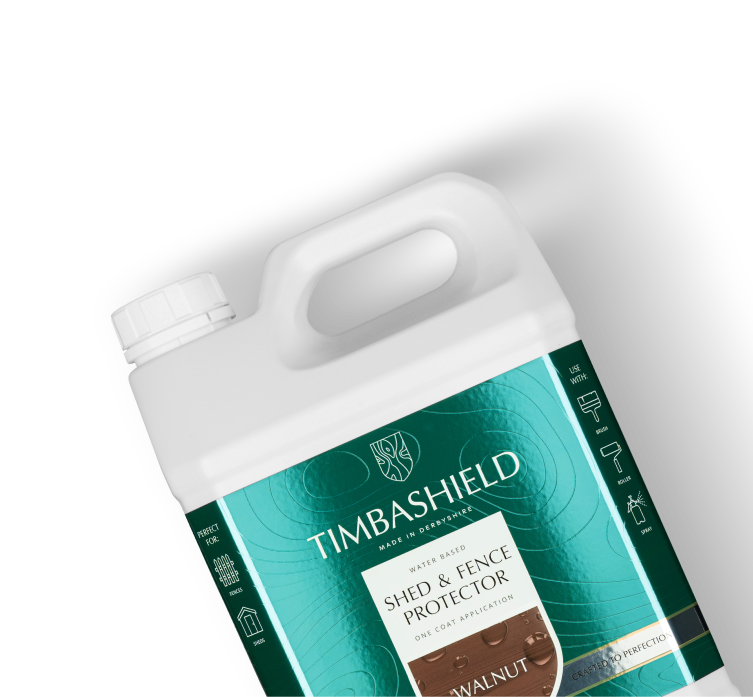
Staining your garden furniture or fence can transform tired-looking timber into a fresh, polished feature in your outdoor space. Whether you're refreshing a worn bench or giving your fence a new lease of life, staining not only enhances the look of your wood but helps protect it from the unpredictable UK weather.
To make sure your staining job goes smoothly, we've pulled together the key do’s and don’ts for achieving a long-lasting, professional-looking finish.
DO: Choose the Right Product for the Job
Not all wood stains are made equal. It’s important to select a product that suits the type of wood you’re working with, not just the structure itself.
If you’re staining rough-sawn timber, such as most fencing, Timbashield’s Shed & Fence Protector is a great option. It’s a water-based stain specifically designed for large surface areas and provides excellent coverage and protection.
For smooth-planed timber, which is commonly used for garden furniture and many modern or premium sheds and garden buildings, Timbashield’s Wood Protector is a versatile choice. This solvent-based stain deeply penetrates the timber and leaves a water-resistant, breathable finish. It’s suitable for use on a wide range of wood types, including sheds, fences, benches, and planters.
If you're working on decking, use Timbashield’s Decking Protector, specially formulated for horizontal surfaces that face regular foot traffic and prolonged exposure to water.
DON’T: Skip the Prep Work
We get it, you’re excited to dive in and see that new colour shine. But skipping preparation is a recipe for disappointment.
- Always clean the surface first – remove dirt, algae, or old flaking treatments using a stiff brush.
- Let it dry completely before applying any stain – moisture in the wood can stop the stain from absorbing properly.
- Sand smooth-planed wood lightly to help the stain grip the surface.
DO: Check the Weather Forecast
Dry weather is essential when staining outdoor wood. Ideally, choose a dry, overcast day with mild temperatures. If it's too cold, damp, or sunny, the stain may not absorb or dry evenly.
- Top tip: Try to stain early in the morning or late afternoon, avoid applying in direct sunlight as it can cause uneven drying and patchiness.
DON’T: Forget to Test First
Even if you're confident in your colour choice, the final look can vary depending on the type and condition of the wood. A common issue is rough-sawn wood appearing darker than expected due to higher absorption. Also keep in mind that wood stains often look different when wet compared to their final dry finish, so always test and wait for it to fully dry before making a final decision.
- Test your stain on a small, inconspicuous area first to make sure you’re happy with the result.
DO: Stir Your Product Well
Before you begin, give your stain a good stir to evenly distribute pigments and oils. This ensures a consistent colour and finish from start to finish, especially important if you're using a product like Timbashield Wood Protector, which contains natural oils and waxes.
DON’T: Apply Too Thickly
More isn’t always better. Applying thick layers can lead to drips, uneven colour, or longer drying times.
- Use even strokes with a brush or roller and follow the wood grain for a smooth finish. Timbashield’s Shed & Fence Protector is designed to cling to the brush and reduce drips, making application easier.
DO: Let It Dry Fully Before Use
As tempting as it is to admire your hard work up close, your furniture or fence needs time to cure properly.
- Follow the product’s drying time guidelines - especially important if rain is forecast or you're working on decking and furniture that will be used frequently.
DON’T: Neglect Ongoing Maintenance
Staining is not a one-and-done task. To keep your timber looking its best and protected from the elements, plan to refresh your stain every couple of years - or sooner if your wood is exposed to intense sunlight, rain, or heavy use.
- Regularly cleaning, inspecting, and topping up with treatments like Timbashield’s Wood Protector or Water Sealer will help extend the life of your outdoor wood.
DO: Choose Quality Wood Treatments
Low-quality stains might look good on the day of application but often fail to deliver long-term protection.
- Timbashield’s range of wood stains and treatments are crafted for UK gardens - providing UV, water, and fungal resistance to ensure your wood lasts through every season.
Final Thoughts
Staining your garden furniture and fencing can dramatically improve your outdoor space, but it’s the right prep and product choice that makes the difference. Follow these simple do’s and don’ts to enjoy a beautifully stained garden that stands the test of time.
Ready to get started?
Explore Timbashield’s range of wood stains and treatments today and give your garden the care it deserves. Shop now.

Winter Wood Care: What You Can Do When You Can’t Stain
Protect your outdoor wood this winter. Learn how to clean, seal, and prep for spring with Timbashield’s expert wood care tips.
view this post
What to Do with Leftover Wood Stain: Tips for Use and Disposal
Discover smart ways to use, store, or safely dispose of leftover wood stain with our practical, eco-friendly tips.
view this post
The Do’s and Don’ts of Staining Garden Furniture & Fences
Discover the essential do’s and don’ts for staining garden furniture and fences to achieve a long-lasting, professional finish.
view this post
